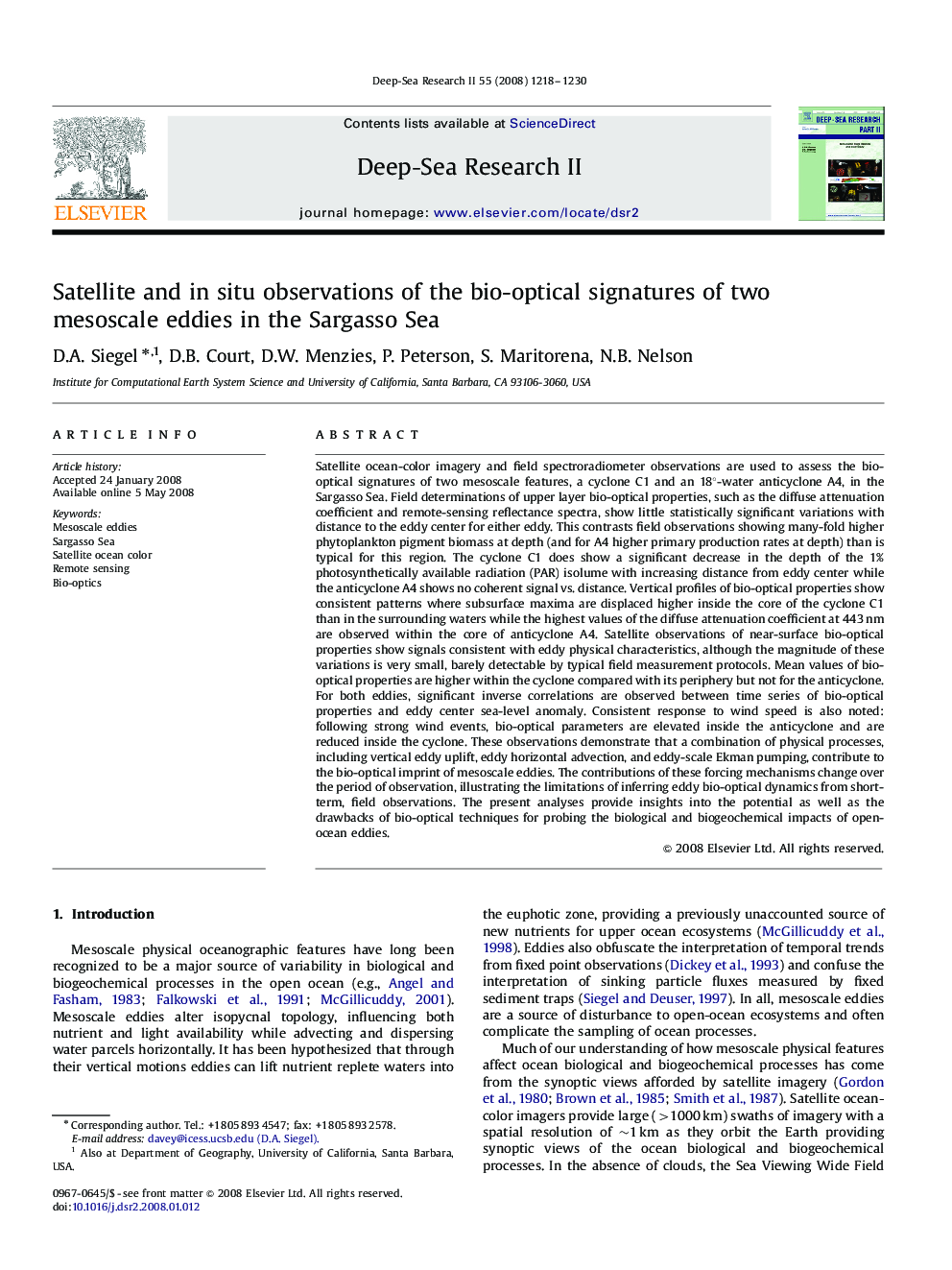| Article ID | Journal | Published Year | Pages | File Type |
|---|---|---|---|---|
| 4538079 | Deep Sea Research Part II: Topical Studies in Oceanography | 2008 | 13 Pages |
Satellite ocean-color imagery and field spectroradiometer observations are used to assess the bio-optical signatures of two mesoscale features, a cyclone C1 and an 18°-water anticyclone A4, in the Sargasso Sea. Field determinations of upper layer bio-optical properties, such as the diffuse attenuation coefficient and remote-sensing reflectance spectra, show little statistically significant variations with distance to the eddy center for either eddy. This contrasts field observations showing many-fold higher phytoplankton pigment biomass at depth (and for A4 higher primary production rates at depth) than is typical for this region. The cyclone C1 does show a significant decrease in the depth of the 1% photosynthetically available radiation (PAR) isolume with increasing distance from eddy center while the anticyclone A4 shows no coherent signal vs. distance. Vertical profiles of bio-optical properties show consistent patterns where subsurface maxima are displaced higher inside the core of the cyclone C1 than in the surrounding waters while the highest values of the diffuse attenuation coefficient at 443 nm are observed within the core of anticyclone A4. Satellite observations of near-surface bio-optical properties show signals consistent with eddy physical characteristics, although the magnitude of these variations is very small, barely detectable by typical field measurement protocols. Mean values of bio-optical properties are higher within the cyclone compared with its periphery but not for the anticyclone. For both eddies, significant inverse correlations are observed between time series of bio-optical properties and eddy center sea-level anomaly. Consistent response to wind speed is also noted: following strong wind events, bio-optical parameters are elevated inside the anticyclone and are reduced inside the cyclone. These observations demonstrate that a combination of physical processes, including vertical eddy uplift, eddy horizontal advection, and eddy-scale Ekman pumping, contribute to the bio-optical imprint of mesoscale eddies. The contributions of these forcing mechanisms change over the period of observation, illustrating the limitations of inferring eddy bio-optical dynamics from short-term, field observations. The present analyses provide insights into the potential as well as the drawbacks of bio-optical techniques for probing the biological and biogeochemical impacts of open-ocean eddies.
